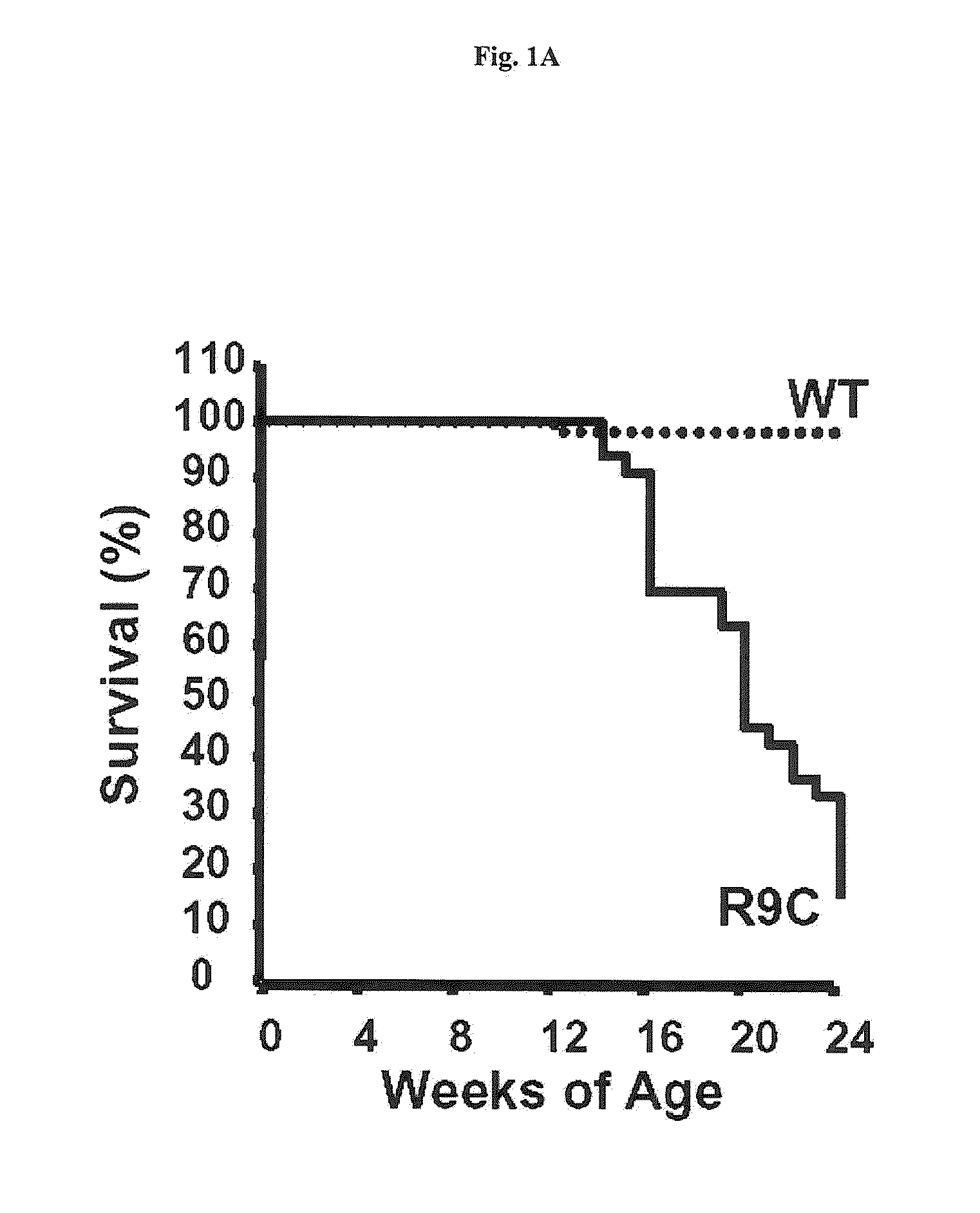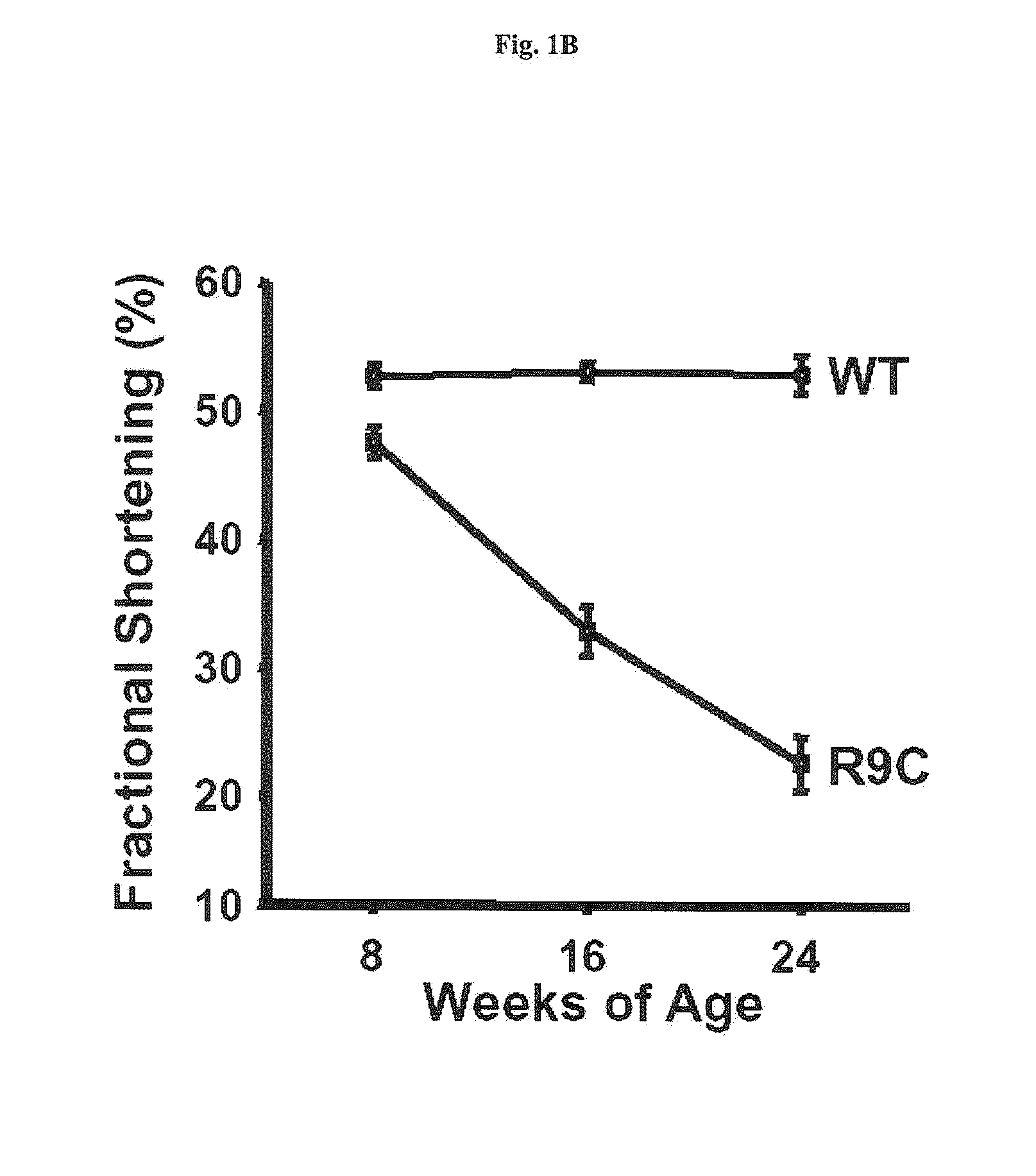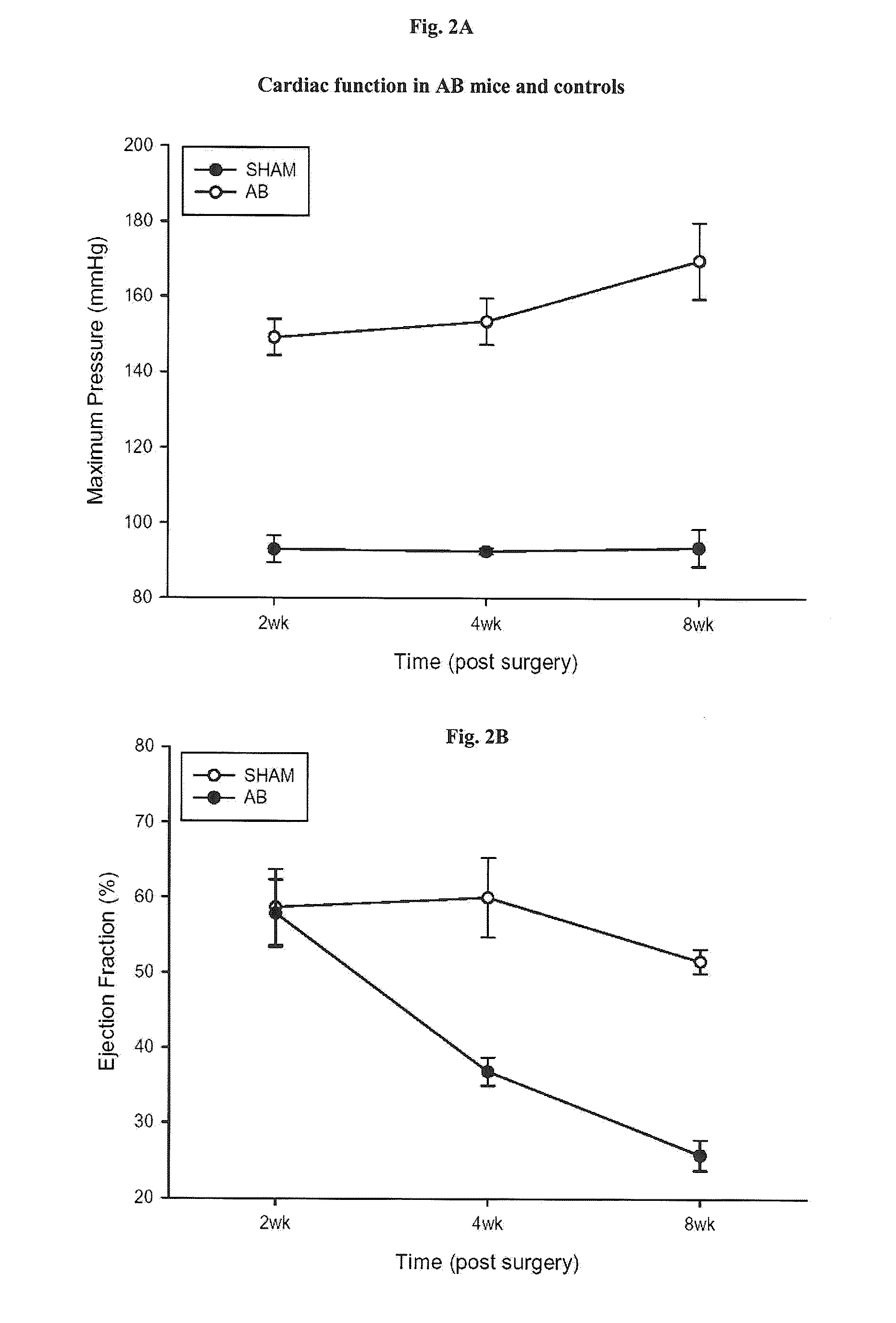Use of slim-1 in the assessment of heart failure
a technology of heart failure and slim-1, which is applied in the field of assessing heart failure, can solve the problems of heart failure, loss of the heart's ability to pump as much blood, and major and growing public health problems, and achieve the effect of preventing or treating heart failur
- Summary
- Abstract
- Description
- Claims
- Application Information
AI Technical Summary
Benefits of technology
Problems solved by technology
Method used
Image
Examples
example 1
Mouse Models of Heart Failure
1.1: The R9C Mouse Model
[0160]It has been reported that an inherited human dilated cardiomyopathy resulted from the conversion of Arg9 to Cys in the human phospholamban (PLN) gene (PLN-R9C) (Schmitt, J. P., et al., Science 299 (2003) 1410-1413). The onset of dilated cardiomyopathy in affected patients typically commenced during adolescence, followed by progressive deterioration in cardiac function leading to crisis and mortality. A transgenic mouse model of this mutation showed similar cardiac phenotype as the affected patients and presented with dilated cardiomyopathy, decreased cardiac contractility, and premature death (Schmitt, 2003, supra).
[0161]We established a survival curve for the transgenic mice. The PLN-R9C mice had a median survival of only ˜20 weeks with fewer than 15% persisting past 24 weeks (FIG. 1 A). The first recorded deaths in the PLN-R9C line are observed at 12 weeks of age, while only one wild-type control mouse died over the 24 wee...
example 2
Sample Preparation and Mass Spectroscopy
Heart Homogenization and Organelle Isolation:
[0169]Hearts are isolated, atria removed, the ventricles carefully minced with a razor blade and rinsed extensively with ice-cold PBS (phosphate buffered saline) to remove excess blood. Tissue is homogenized for 30 s using a loose fitting hand-held glass homogenizer in 10 ml lysis buffer (250 mM sucrose, 50 mM Tris-HCl pH 7.6, 1 mM MgCl2, 1 mM DDT (dithiothreitol), and 1 mM PMSF (phenylmethylsulphonyl fluoride). All subsequent steps are performed at 4° C. The lysate is centrifuged in a benchtop centrifuge at 800×g for 15 min; the supernatant serves as a source for cytosol, mitochondria, and microsomal fractions. The pellet containing nuclei is diluted in 8 ml of lysis buffer and layered onto 4 ml of 0.9 M sucrose buffer (0.9 M sucrose, 50 nM Tris-HCl pH 7.6, 1 mM MgCl2, 1 mM DDT, and 1 mM PMSF) and centrifuged at 1000×g for 20 min at 4° C. The resulting pellet is resuspended in 8 ml of a 2 M sucrose...
example 3
Statistical Evaluation of the Data Obtained in the Model Systems
[0174]3.1: Statistical Methods Used to Generate p-Values of Differential Expression for the R9C Mouse Model
[0175]The raw data obtained with the methods as described in Example 2 consists of 6190 proteins each with spectral counts, the sum of all spectra associated with the protein, for each of the 137 different experimental runs. The raw data, 6190 subset of proteins, is subjected to global normalization which first separates the data within each run into an equal number of groups, set at 100 for our analysis, based on their spectral counts. LOESS (Cleveland, W. S. and Devlin, S. J., Journal of the American Statistical Association 83 (1988) 596-610) is then performed on each group (1-100) adjusting for differences in spectral counts across a set of genes with similar spectral counts.
[0176]Based on our raw data we constructed two linear models, the first model uses control / disease, time (8W, 16W, end) and location (cyto,...
PUM
 Login to View More
Login to View More Abstract
Description
Claims
Application Information
 Login to View More
Login to View More - R&D
- Intellectual Property
- Life Sciences
- Materials
- Tech Scout
- Unparalleled Data Quality
- Higher Quality Content
- 60% Fewer Hallucinations
Browse by: Latest US Patents, China's latest patents, Technical Efficacy Thesaurus, Application Domain, Technology Topic, Popular Technical Reports.
© 2025 PatSnap. All rights reserved.Legal|Privacy policy|Modern Slavery Act Transparency Statement|Sitemap|About US| Contact US: help@patsnap.com



